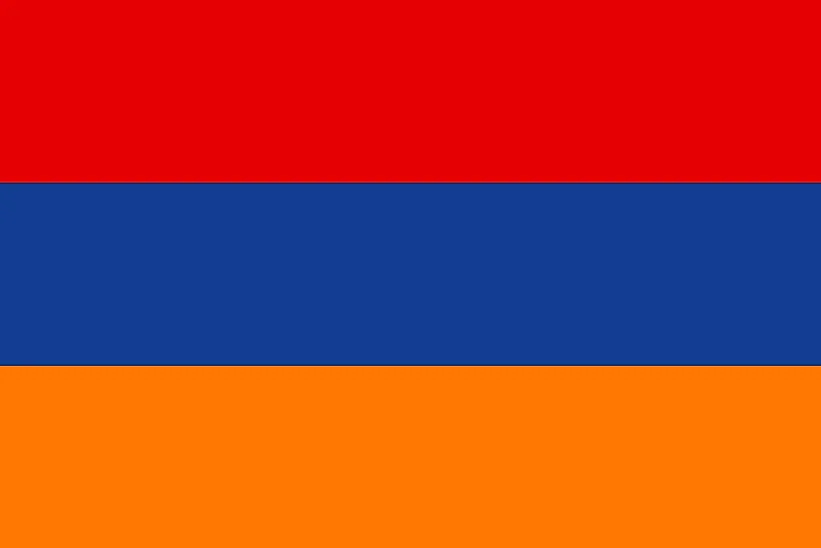
Armenia
| Continent | Asia |
| Capital | Yerevan |
| Population | 3,051,250 |
| GDP | $26.30 Billion |
| GDP per Capita | $8,900 |
| Dialing Code | +374 |
| ISO Code (2-letter) | AM |
| ISO Code (3-letter) | ARM |
Armenia Landscapes






About Armenia
Welcome to Armenia, one of the world’s oldest civilizations and the first nation to adopt Christianity as its state religion. Located at the crossroads of Eastern Europe and Western Asia, this landlocked country of approximately 29,800 square kilometers is home to about 3 million people. Armenia’s rich history, dramatic landscapes, and unique cultural heritage make it a fascinating destination that bridges the ancient and modern worlds.
Geographic Features and Natural Beauty
Armenia’s geography is dominated by mountains and highlands, with about 90% of the country situated at least 1,000 meters above sea level. The iconic Mount Ararat, though now in neighboring Turkey, remains a powerful symbol of Armenian identity and is visible from much of the country. The Lesser Caucasus Mountains traverse the country, creating spectacular landscapes of peaks, valleys, and alpine meadows.
Lake Sevan, one of the largest high-altitude freshwater lakes in Eurasia, covers about 5% of Armenia’s territory. Its pristine blue waters and surrounding mountains create breathtaking views and provide popular recreational areas. The country’s diverse terrain includes everything from semi-desert landscapes to lush forests, supporting a rich variety of flora and fauna.
The dramatic Debed Canyon in the north and the scenic Vorotan Gorge in the south showcase Armenia’s remarkable geological heritage, while numerous mineral springs and hot springs dot the landscape, some developed into popular health resorts.
Cultural Heritage and Traditions
Armenian culture is one of the world’s oldest continuous civilizations, with a written history spanning over 3,000 years. The Armenian alphabet, created in 405 CE by Mesrop Mashtots, is a unique writing system that has played a crucial role in preserving national identity through centuries of foreign domination.
Armenian architecture is particularly notable for its distinctive medieval churches and monasteries, many of which are UNESCO World Heritage sites. The monastery of Geghard, partially carved out of a mountain, and the ancient Temple of Garni demonstrate the remarkable architectural achievements of Armenian civilization.
Traditional Armenian music, using instruments like the duduk (a double-reed woodwind), has gained international recognition for its haunting, ethereal quality. Armenian cuisine reflects the country’s position at the crossroads of different civilizations, featuring dishes like dolma, khorovats (barbecue), and lavash (flatbread), the latter being UNESCO-listed as an Intangible Cultural Heritage.
Historical Journey
Armenia’s history is a testament to resilience and cultural preservation. The kingdom of Urartu flourished in the region from the 9th to 6th centuries BCE, followed by various Armenian kingdoms. The adoption of Christianity in 301 CE marked a pivotal moment, making Armenia the first Christian nation in history.
Throughout centuries of rule by various empires – Persian, Roman, Byzantine, Arab, Mongol, and Ottoman – Armenians maintained their distinct cultural identity. The tragic Armenian Genocide of 1915 remains a defining moment in the nation’s history, leading to a large Armenian diaspora worldwide.
After a brief period of independence following World War I, Armenia became part of the Soviet Union until 1991, when it regained independence. The post-Soviet era has seen Armenia working to build a modern democratic state while preserving its rich cultural heritage.
Modern Economic Landscape
Today’s Armenia is transitioning to a market economy, with a focus on developing its technology sector. The country has emerged as a regional tech hub, earning the nickname “Silicon Mountain.” The IT sector has shown remarkable growth, attracting international companies and fostering numerous startups.
Mining, particularly of copper and molybdenum, remains important to the economy, while agriculture continues to play a significant role. Armenia’s famous brandy production, particularly the renowned Ararat brand, is a source of national pride and export earnings.
International Relations and Global Position
Armenia maintains complex relationships with its neighbors and is a member of various international organizations, including the Eurasian Economic Union and the Collective Security Treaty Organization. The country works to balance relationships with Russia, its traditional ally, and Western nations, while dealing with regional challenges, particularly regarding Azerbaijan.
Did You Know?
• The Armenian alphabet has 39 letters and is considered one of the world’s most perfectly phonetic writing systems?
• The Matenadaran in Yerevan houses one of the world’s largest collections of medieval manuscripts and books?
• Armenia is home to the world’s oldest winery, dating back approximately 6,100 years?
• The world’s longest non-stop double-track cable car, the Wings of Tatev, is located in Armenia, leading to the 9th-century Tatev Monastery?
Conclusion
Armenia stands as a living testament to human resilience and cultural preservation, where ancient traditions seamlessly blend with modern aspirations. From its stunning mountain landscapes to its rich cultural heritage, from its ancient Christian monuments to its emerging tech sector, Armenia continues to evolve while maintaining its unique identity. As it faces the challenges of the 21st century, Armenia remains a fascinating destination that offers visitors a unique glimpse into both the ancient and modern worlds.